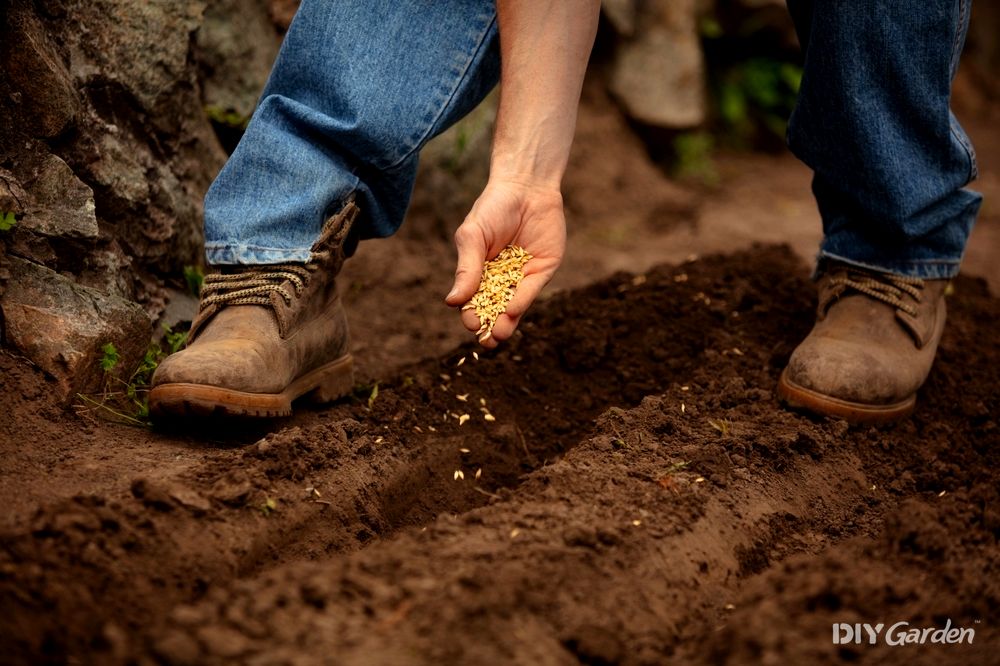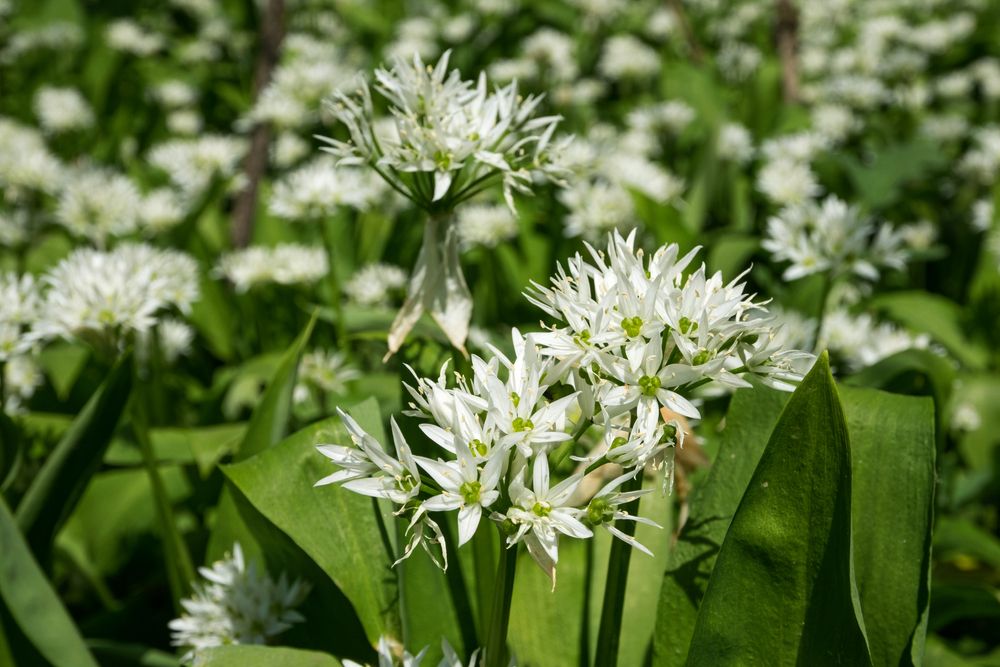
What to Plant in April
Although spring officially began in March, April is when you really start to feel the seasonal shift into the warmer months. Temperatures start to rise, sunny days become more frequent, and gardens begin to erupt with new life.
If you haven’t already checked out our post on what to plant in March, it’s worth a read since many of those crops can be planted in April too. However, if you’d like to add even more abundance to your garden, we have plenty more inspiration to offer – scroll on for 10 fruit & vegetables to plant in April.
1. Carrots
If carrots aren’t already a staple in your diet, try growing your own and they soon will be – freshly picked, homegrown carrots are significantly sweeter and crunchier than those available at supermarkets. While some start sowing carrots in March, April sowings are much lower maintenance since they can be directly sown outside without any protection.
Start by making sure that the soil in your carrot bed is fine and lightweight. If it feels quite heavy and clumpy, mix some sand in until you reach a good consistency. Then, sow your carrot seeds into shallow drills, about 1cm deep. Since carrot seeds are tiny, don’t worry if you end up sowing them too thickly, as you can always thin them out later on.
It’ll take about 2-3 weeks for your carrot seeds to germinate, depending on weather conditions – they need at least 7°C to sprout. Once your seedlings are a few centimetres tall, start thinning them out to leave about 5cm of space between each plant. Keep them well-watered and you should be picking fresh carrots in 3-4 months!
2. Courgettes & Other Squashes
Courgettes, along with other squashes, are loved for their highly productive nature. Just a single plant can yield several kilograms of fruit, without much input required. They can be directly sown outside too, although April sowings should be done under cover since a consistent minimum temperature of 15°C is needed for optimum germination.
Courgette seeds are best started in individual modules. Since they usually have a good germination rate, you’ll only need to sow one seed per module, about 1cm deep, placing the seed on its side. Keep your trays somewhere bright, since light helps to speed up courgette germination.
When given enough warmth, your seeds should sprout in 1-2 weeks. The seedlings grow quickly, meaning that you’ll likely need to pot them up at least once before your last frost has passed and they can be safely moved outside.
3. Potatoes
All potato varieties fall under three categories; first earlies, second earlies, and maincrop. Whichever you choose to grow, they can all be planted in April – the earlies should be planted at the beginning of the month, while maincrop varieties should be in the ground by the end of the month.
Pick a planting site that’s not prone to heavy April frosts, as this can kill off delicate new foliage. If you don’t have enough space in the ground or in a raised bed, potatoes can be grown in buckets and bags too – they really are incredibly versatile!
Planting methods vary as well. Some like to bury their potatoes about 10cm deep, while others use the no-dig method, placing their potatoes on the surface of the soil and then covering them with about 10-15cm of compost or straw. Both work well, so pick the planting method that best suits your growing conditions.
4. Peas
Known for being a nitrogen-fixer, peas are a fantastic crop to dot around your garden – they’ll draw up minerals from deep within your soil, allowing the plants around them to access those too. Since peas do best in the cooler months of the year, April is the perfect time to get some seeds going.
With temperatures starting to rise this time of year, peas can be sown directly outside. They’re able to easily withstand light frosts, so won’t need much, if any, protection. Instead, ensure that your growing area is clear of weeds before sowing each seed 5cm deep and 8cm apart.
Pea seeds will germinate in temperatures as low as 6°C. They usually start to sprout in 1-2 weeks – the warmer the weather is, the faster they’ll germinate. If you gave each seed adequate spacing when sowing, then thinning out seedlings won’t be necessary. Just give them plenty of water, a frame to sprawl over, and you should start to see plump pods in about 3 months.
5. Radishes
Radishes are another cool-season crop that does well when sown in April. This gives them plenty of time to produce a chunky root before the heat of the summer sets in and triggers the bolting process – some varieties are ready to harvest just 4 weeks after sowing!
Since they’re such a fast grower, radishes do best when direct sown. Seeds should be placed 1.5cm deep into a prepared bed, and spaced 1.5cm apart. In average springtime temperatures, they should germinate in 4-10 days. Don’t panic if you experience a cold snap, as the seeds will still sprout so long as temperatures are above 4°C.
Once seedlings appear, you’ll need to thin them out. The amount of space that you give to each radish should be based on the variety you’re growing – some will need just 5cm of space, while others will require double this. Either way, don’t be tempted to cram too many radishes into too small a space, as this will result in shrivelled, undersized roots.
6. Swiss Chard
A biennial vegetable that you can continue to harvest throughout the winter months, chard not only provides year-round nutrition, but also looks beautifully structural and colourful in the garden. April is the best time to start sowing chard seeds – do this under cover at the start of the month, or wait until the end of April before sowing your seeds directly outside.
To start your chard under cover, fill module trays with multi-purpose compost and sow your seeds about 1.5cm deep. Give them a bit of warmth, around 18°C, and your seeds should germinate in about a week. Once your seedlings have a few sets of true leaves, you can plant them out.
If you’d prefer to direct sow your chard seeds, you’ll need to wait until temperatures are consistently above 10°C – if they drop lower than this, then your seeds won’t germinate. Once they sprout, thin your seedlings out to give them 30cm of space if you’re hoping for large plants, or just 5cm of space if you’re planning on picking baby leaves.
7. Sweetcorn
Not so long ago, the thought of growing fat cobs of juicy sweetcorn in a cool climate would have been laughable. However, there are now so many exciting new varieties available, many of which have been bred specifically for temperate regions, that gardeners all over the world are able to experience the pure bliss of freshly picked sweetcorn.
Although sweetcorn has quite a long growing season, it also needs plenty of heat, meaning that the earliest you should sow your seeds is in April. They’ll need to be started off under cover, either in your house or in a greenhouse. Sow each seed into a small pot of multi-purpose compost, about 2.5cm deep.
For the best germination rates, sweetcorn seeds need 30°C, making a heated propagator very useful. Give them enough heat and your seeds should germinate in 1-3 weeks. You’ll then need to wait until your last frost has long gone and outdoor temperatures are consistently above 10°C before planting your sweetcorn out.
8. Yacon
A member of the daisy family, yacon is a root crop, although its large and juicy tubers are usually eaten raw, just like a fruit. While yacon plants can be purchased and planted out in the summer, the best way to grow this vegetable is by planting rhizomes, which should be done in April. This should just about give you the 6-7 month growing season that you need before a heavy frost sets in.
Yacon rhizomes should only be planted once they have sprouted, with each rhizome producing a few sprouts. Plant your rhizomes about 2.5cm deep, spacing them at least 50cm apart. The plants grow quite tall and bushy, so don’t be tempted to crowd them together.
After planting, the low-maintenance nature of the yacon plant really shines through. You won’t need to do much else with the crop, other than keeping it weed-free and watered during dry spells.
9. Wild Garlic
Wild garlic is known for being quite invasive, but many gardeners use this to their advantage – if you have a damp and shady spot in your garden where other plants struggle to grow, wild garlic will likely thrive.
Your wild garlic patch can be started in two ways; from seed or from bulbs. Seeds are cheaper but take about 4 years to produce a harvest, whereas planting bulbs means that you’ll be picking wild garlic leaves the following spring. Whichever you choose, both can be done in April.
If sowing your wild garlic directly outside, scatter your seeds 1cm deep in clumps that are about 5cm apart. Alternatively, if you’re starting with bulbs, plant these 3cm deep, once again keeping them in clumps. While your wild garlic patch will soon outcompete any surrounding weeds, try to keep the area clear of weeds to begin with, as this will give new plants the best possible start.
10. Watercress
Chances are that most of the salad crops in your garden are annuals, which is what makes watercress so special – not only is it a perennial, but it will also pretty much take care of itself once it has established, meaning year-round harvests for you with very little effort required.
The main consideration to keep in mind when growing watercress is that this is a semi-aquatic plant, meaning that it needs constant access to clean water. However, this doesn’t need to be difficult – a pot sitting in a saucer that’s regularly topped up with water will meet these requirements.
April is the best time of year to sow watercress seeds, since temperatures of 8-15°C are needed for germination. Ideally, direct sow your seeds into the container that you plan to grow them in. Scatter your seeds 0.5cm deep, place them in a bright spot, and make sure that the soil is kept consistently moist. You should see seedlings start to appear in 1-2 weeks.
Summary
Without a doubt, April is one of the busiest months in the garden, with so many different crops to sow and plant. Whether it may be exotic root vegetables or daily staples, give your garden some extra attention now and your efforts will pay off come harvest time.










